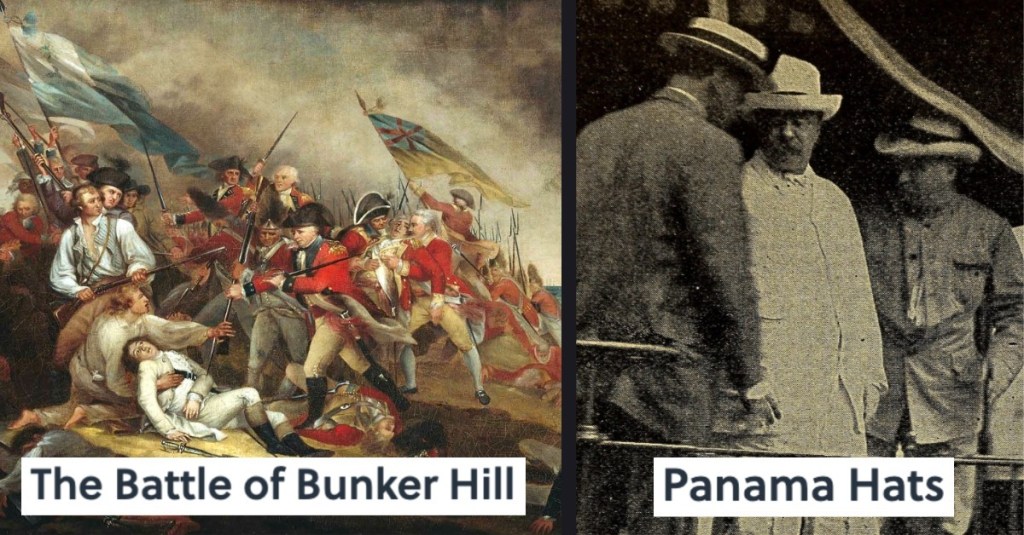The world is full of misnomers and we don’t even give most of them a second though when we read them or say them out loud.
And today we’re going to get to the bottom of 15 misnomers with misleading labels.
Let’s take a look!
1. Chinese Checkers.
Chinese Checkers aren’t Chinese at all!
And it’s not even a form of Checkers…
The game was actually invented in Germany in 1892 and was called Stern-Halma. The name change came in the 1920s to make the game more marketable to consumers.
Photo Credit: Wikimedia Commons
2. Arabic numerals.
No, Arabic numbers (1, 2, 3, 4, etc.) do not actually come from the Arabian Peninsula.
They originally came from India but they’re named for Arabian mathematicians who introduced them to the Europeans during the Middle Ages.
3. Koala bears.
Those lovable koala bears are not bears at all!
They’re actually marsupials!
The more you know, right…?
Photo Credit: Unsplash,David Clode
4. King crabs.
And King crabs aren’t actually crabs!
They’re actually referred to as “false crabs”, along with hermit crabs and horseshoe crabs.
Imposters!
5. Horned toads and slow worms.
Both of these creatures have misnomer names, as well.
Are you ready for it?
Horned toads and slow worms are actually both…LIZARDS.
It’s true!
Photo Credit: Unsplash,Cynthia Beilmann
6. Velvet ants.
The unique-looking species known as velvet ants are actually not ants at all, but rather they are actually wasps.
Who knew?
7. Peanuts, Coconuts, and Walnuts.
Peanuts, coconuts, and walnuts are all actually NOT NUTS.
Peanuts are related to peas, and coconuts and walnuts are actually drupes, as are olives, dates, and coffee beans.
Drupes are fruits surrounding a hard shell that contains a seed.
Photo Credit: Unsplash,Isai Dzib
8. Panama hats.
Well, this sure is surprising…
Those famous Panama hats (think of the Panama Jack brand) are actually from Ecuador.
But the term “Panama hat” was used as early as the 1830s.
The popularity of the hats (and the name) took off after President Theodore Roosevelt wore one in 1906 while visiting the Panama Canal construction zone.
9. English horns.
These instruments have a double whammy of misnomers.
They’re from Poland, not England.
And it’s not actually a horn, but a woodwind instrument that’s related to the oboe.
Photo Credit: Wikimedia Commons
10. Jerusalem artichokes.
Are y’all ready for this?
Jerusalem artichokes don’t come from Jerusalem at all…instead, they are from North America!
The name might come from the Italian word for “sunflower,” girasole.
In fact, the Jerusalem artichoke isn’t an artichoke but is a member of the sunflower family.
11. Pont Neuf Bridge.
The famous bridge in Paris is the oldest in the city and was completed in 1607.
But its name means “new bridge”.
Go figure…
Photo Credit: Wikipedia
12. The Isle of Dogs.
London, England’s Isle of Dogs isn’t an island.
It’s a peninsula surrounded on three sides by the River Thames.
13. Funny bone.
Hitting your funny bone isn’t very funny, is it? That sensation can be shocking!
But it’s not even a bone, but rather the ulnar nerve.
It’s thought that the nerve got its name because the upper bone of the arm is called the humerus…get it?
Photo Credit: Unsplash,Matt Moloney
14. The Battle of Bunker Hill.
The famous American Revolutionary War battle occured on June 17, 1775 in Charlestown, Massachusetts.
And it mostly took place on Breed’s Hill, not Bunker Hill…
But Bunker Hill was the main objective of both the colonists and the British forces so the name stuck.
15. The Thirty Days’ War.
This war didn’t last thirty days at all!
Instead, this skirmish, also known as the Greco-Turkish War, was actually part of a larger series of conflicts that lasted for a total of 304 days.
Photo Credit: Wikipedia
